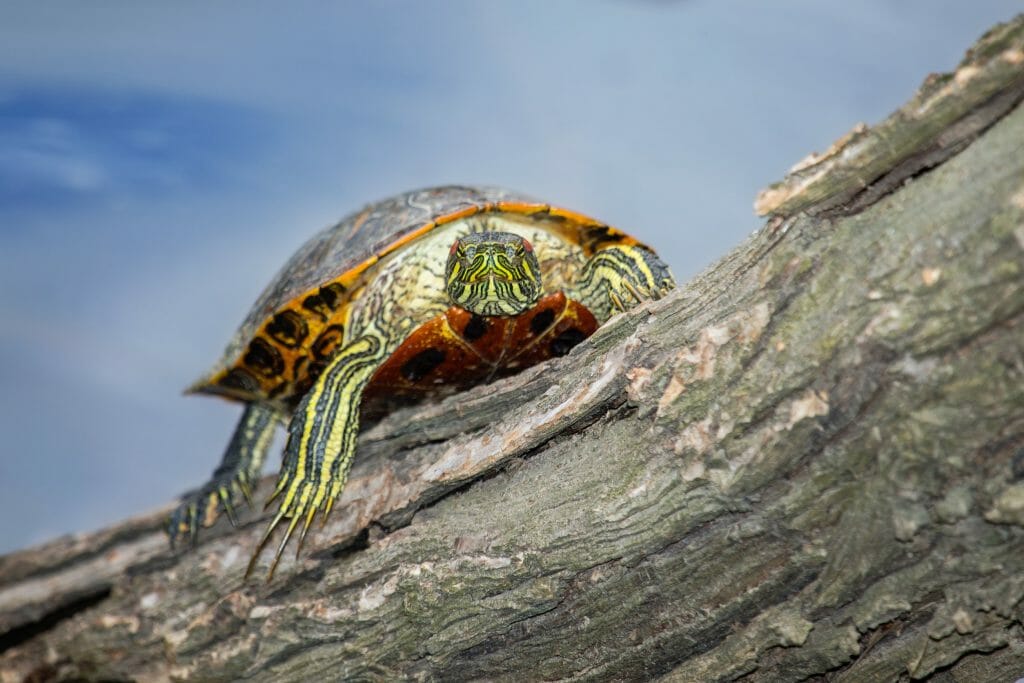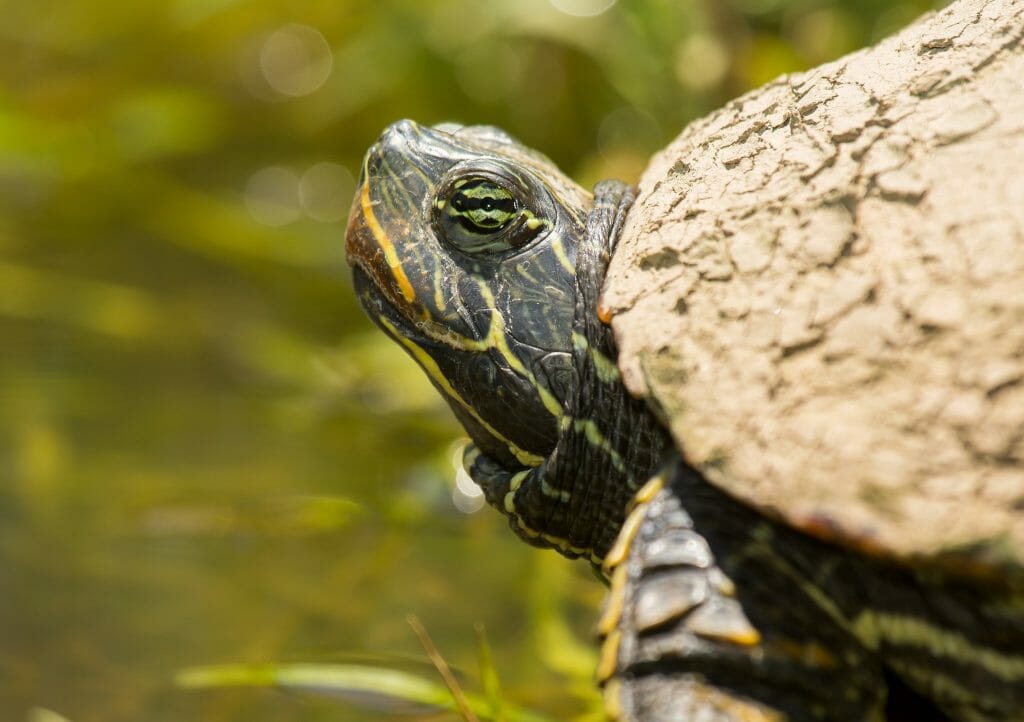Different Types of Red-Eared Slider Turtles: General Facts and Things to Consider Before Buying Them

Red-eared slider turtles come in various colors, so there’s sure to be a species perfect for you. These turtles are excellent swimmers and can easily cross large bodies of water. They are also known to be fast and agile basking turtles, making them a favorite for turtle-watching enthusiasts. They’re an excellent option for people who want to keep pets but don’t have room for a full-sized animal.
Table of Contents
General Facts About Red-Eared Slider Turtle
Appearance
They have smooth skin and soft scales that make them easy to touch. They are usually brown or black with a yellow chin and ears. These gentle creatures are great for people who want a turtle that you can handle easily. So if you’re looking for an eye-catching turtle and easy to take care of, red-eared slider turtles are the perfect option!
Size
Some red-eared slider turtles can grow 5-11 inches long, making them the perfect size for pet turtles. Hatchlings are the size of a ping pong ball, but their size will gradually increase as they reach adulthood. Most red-eared slider turtles feed primarily on insects but might also eat small reptiles and birds if they find them edible.
Hatching of Eggs
Males will defend their territory while females lay eggs which take around 60 days to hatch, usually between May and July in the north-east US. Hatchlings spend about three months growing before becoming independent sliders and looking for a mate or home range.
Lifespan
Slider turtles are a turtle species that can live for around 20 years in captivity. They are diurnal and primarily active during the day.
Conservation and Threats
Slider turtles are a common aquatic reptile that can be found all over the world. They have a lifespan of around 20 years in captivity. The main threat to sliders is habitat loss – they are often found near water bodies that are being destroyed or degraded. For them to survive, we need to work together as a species and conserve our planet’s resources.
Tank Size, Heating, Lighting, and Setup
Here are some key points to keep in mind when setting up your red-eared sliders’ new home:
- Make sure the tank has similar environmental characteristics as its natural habitat.
- Basking spots should be around 82 degrees Fahrenheit and contain rocks to climb on.
- Heating pads can be used during the winter but should not be used during summer as they can create excessive heat in their tank.
- Lighting should generally remain low at night so that the turtles don’t feel overwhelmed or stressed by too much light – instead, use red lighting to simulate the dawn and dusk hours they would live in nature.
Red-Eared Slider Turtles as Pets
Red-Eared Sliders make great pets because they are easy to take care of and have a low maintenance requirement. They are also friendly animals that love spending time with their owners. This species is among the most common turtle species found across the globe, and for a good reason – they’re one of the most accessible turtles to care for!
Things to Consider When Buying Red-Eared Slider Turtle

When it comes to red-eared slider turtles, the options are endless! As such, it can be tough to decide which turtle to buy. That’s why we’ve put together this buying guide to help you make the right decision.
- First, know that red-eared slider turtles can be purchased as hatchlings, juveniles, or adults.
- Hatchlings are the cheapest and need the most attention since they grow quickly.
- Adults will require less care than either of the previous two options but may cost more due to their size and complexity of needs (i.e., water changes).
- If you’re looking to buy a turtle slowly over time, juveniles are an excellent option for you!
- Lastly, remember that red-eared slider turtles come in different colors and patterns.
Common Health Concerns
You should be aware of a few common health concerns regarding turtles. One is their gentle nature – turtles are not recommended for first-time turtle owners as they can get scared quickly and might injure the reptile. Apart from this, these creatures love to move around and need plenty of exercise. Ensure they have access to fresh water and avoid putting them in direct sunlight or near hot surfaces. If your turtle gets too plump, give it a little walk around!
Pricing and Availability
The red-eared slider can cost $20 per piece. Make sure you research your potential sliders’ normal behavior before buying to prepare you for any issues down the line. For example, buy from someone with a good reputation and availability guarantees if you intend to buy a slider. Breeding is essential for keeping slider populations healthy, so make sure to patronize reputable breeders!
Typical Behavior of Red-Eared Slider Turtle
Red-eared slider turtles are often considered among the most accessible turtles to keep, as they have a calm and docile temperament. Therefore, it is essential to understand their natural behavior before handling them – these creatures can quickly become agitated if startled or stressed.
These turtles are known for their synchronized swimming displays, which are a beautiful sight to see. Watch for warning signs, such as raised hackles, snapping jaws, and spinning around rapidly. This turtle is usually calm and docile but can become aggressive during the breeding season. Take action immediately if you see any abnormal behavior from your red-eared slider turtle!
Handling a Red-Eared Slider Turtle
Handling red-eared slider turtles should also be avoided whenever possible – sliders aren’t afraid of humans but tend to react negatively if mishandled. It’s also advisable not to handle slider turtles too much during early development- this could cause behavioral problems down the line! Regarding diet, red-eared sliders are herbivores that primarily feed on plants but will eat meat if necessary.
Generally speaking, they appreciate gentle petting but do not like being picked up excessively or held against their will- making them ideal candidates for home aquariums or terrariums!
Taking Care of a Red-Eared Slider Turtle
There are different types of red-eared slider turtles, and each one needs different levels of care. So if you’re looking to take care of one, the general rule is to water them daily and place them in a warm, sunny spot. Depending on the turtle’s type, they may also need to be fed a small number of insects or vegetables every day.
Different types of red-eared slider turtles also need different levels of care. For example, the American slider turtle needs less water and food than the horned turtle. So if you’re looking to adopt a turtle, be sure to research the types of turtles available in your area and know the specific needs of the turtle you’re considering. If your turtle gets sick or injured, take it to a veterinarian as soon as possible.